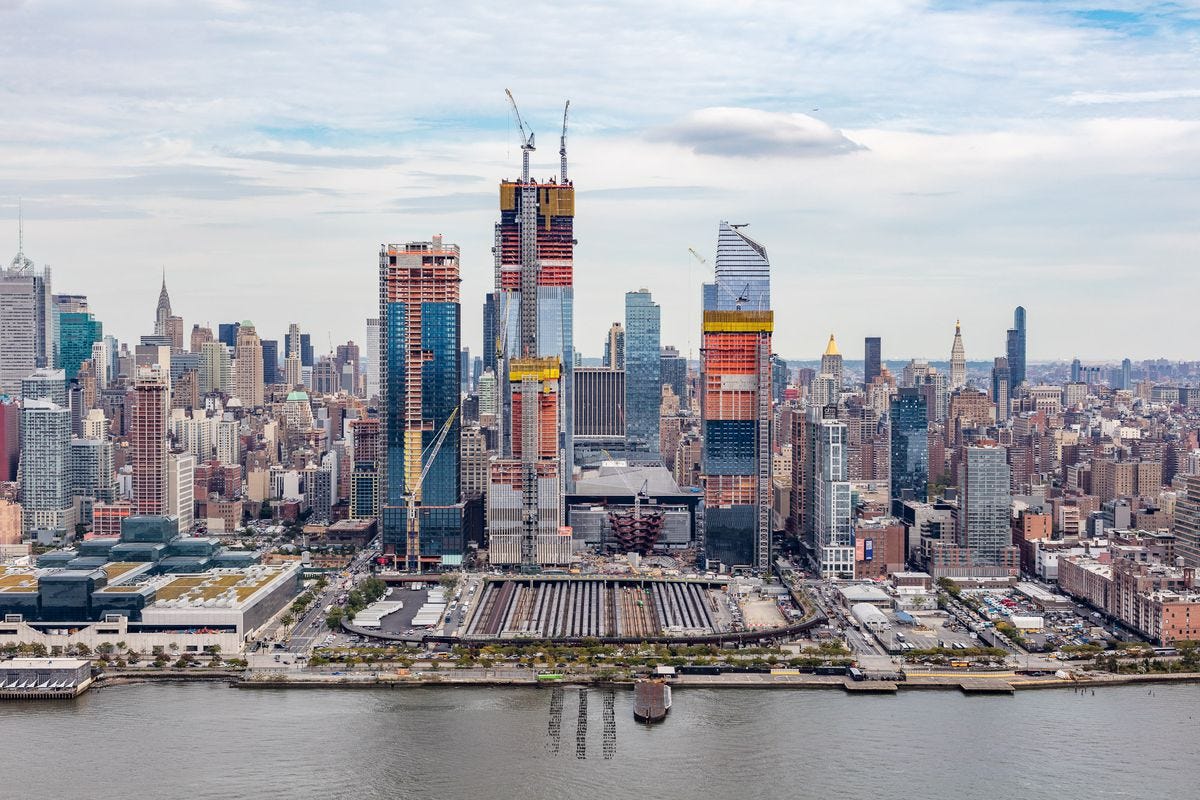Unproductive Real Estate, Unproductive Genitalia, and the Property Brother Propaganda Machine
Bloodthirsty investors and an American housing marketing juggernaut fluffs the importance and market value of homes--while basic human needs and desires are woefully unmet and cast aside.

Last year, fellow housing activist Lou Cespedes and I wrote a piece in The Brooklyn Paper entitled “The City No One Asked For.” The piece protested the large office and residential towers that have overtaken New York City’s skyline and represent the bulk of the city’s new construction . These charmless glass-and-steel monstrosities are neither affordable to local wage earners, sustainable in their locations and designs, nor meant to do more than generate development and debt service fees, and act as tax-free (via abatements), collateralized-assets that can be leveraged to acquire more debt that’s put into other, similar developments.

I was reminded of NYC real estate’s design intent reading the above tweet by Substacker Apex. He explained how investors use large cash balances to acquire low interest, Fed-and-other-centrally-bank-issued debt (new money) to buy and build investments. Between the beginning of 2020 and the end of 2021, the U.S. Fed issued 80 percent of all total cash to pay for those investments, much of which was directed towards buying real estate in the form of mortgage backed securities (MBS). These securities are associated with existing and new real estate developments, redevelopments, bundled outstanding commercial and residential mortgages, and the like. Marketed as an economic shot of adrenaline, the influx of money is mostly diluting the value of the existing money pool and driving inflation.


Whether cash or collateralized, tradeable assets (e.g. bonds issued against commercial real estate holdings, venture capital, etc.) today’s institutional investor is able to leverage what they have for what they want, which is “financing.” In this context, financing means the minimum amount of equity and debt commitments to transact or start a deal : buying a company, factory, real estate asset, infrastructure project, etc. Because there’s so much available deb, the investor rarely needs to touch their cash, just have it around in case; that untouched cash used to secure the debt is known as “dry powder.” It’s money with the potential to do something, but doesn’t need to because there’s new, free money for that.

To illustrate, let’s say Investor A has a $10M cash balance, which they use to secure a $2M investment loan at 5 percent over two years. Even though many capital markets (real estate, commercial bonds, etc.) are producing far better returns on short-term investments, let’s say A’s investment yields a modest 20 percent with 5 percent interest over two years. While that debt is being serviced, the investor is getting 15 percent returns on the initial investment (20 percent less debt service), which required little or no money (equity) down, and certainly none that isn’t recouped. The new dividends can be used for luxury goods or reinvested for compound growth (leveraging $11.5 of dry powder instead of $10M) or some combination thereof.

The problem is that designing investments for maximum debt extraction, service fees, and operating income is different from designing for efficiency, supporting maximum human and planetary health, or withstanding investment timelines longer than a few years. The former’s design is usually additive , demanding more square footage, horsepower, gadgets, infrastructure, ice cream toppings, and anything that makes or consumes money. The latter’s design is usually subtractive , demanding greater simplicity, fewer distractions, greater quality, less upkeep and expense or anything that detracts from the user’s overall enjoyment of life.
Keep reading with a 7-day free trial
Subscribe to David Friedlander's Brief to keep reading this post and get 7 days of free access to the full post archives.



